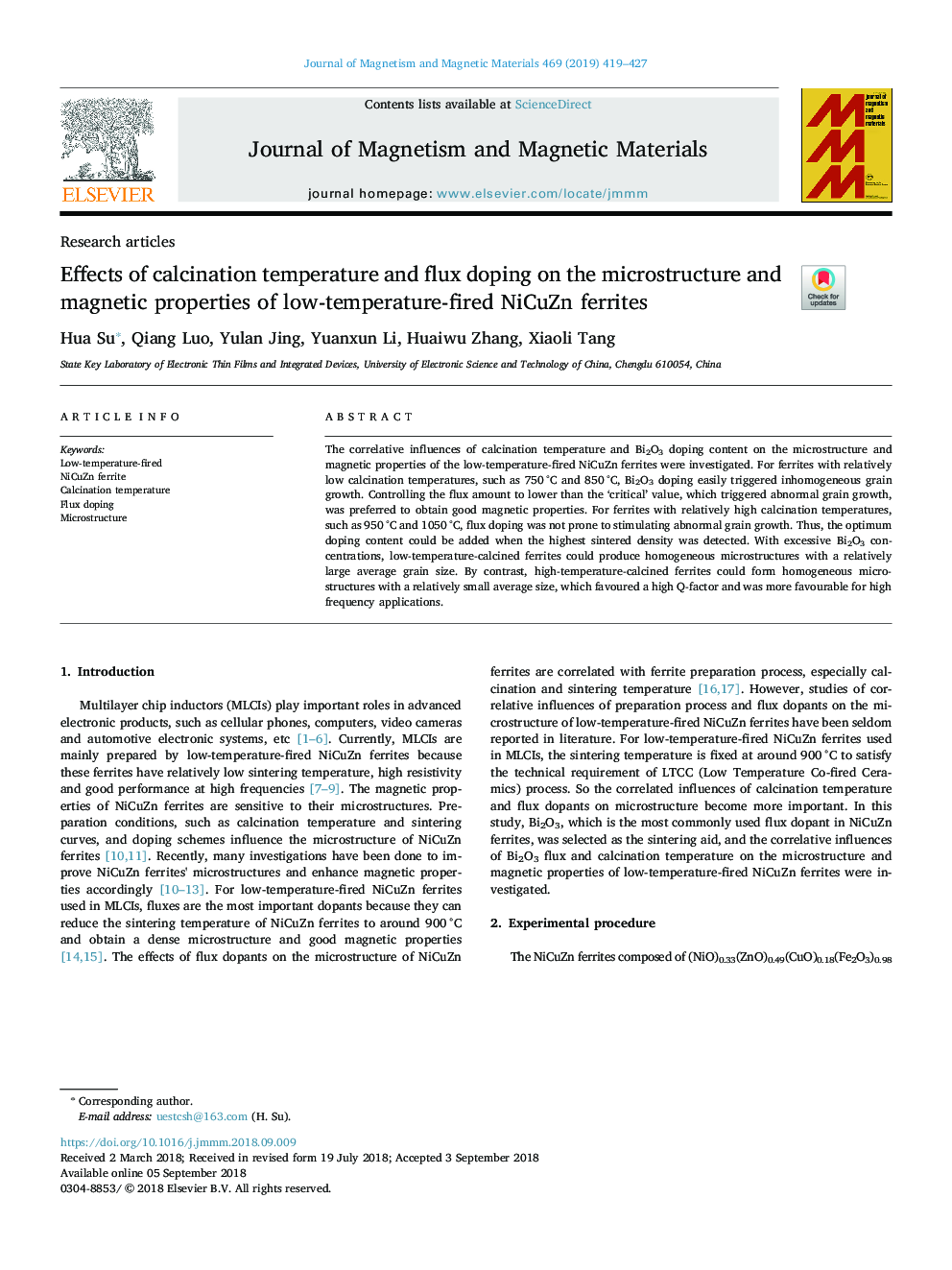| Article ID | Journal | Published Year | Pages | File Type |
|---|---|---|---|---|
| 10129009 | Journal of Magnetism and Magnetic Materials | 2019 | 9 Pages |
Abstract
The correlative influences of calcination temperature and Bi2O3 doping content on the microstructure and magnetic properties of the low-temperature-fired NiCuZn ferrites were investigated. For ferrites with relatively low calcination temperatures, such as 750â¯Â°C and 850â¯Â°C, Bi2O3 doping easily triggered inhomogeneous grain growth. Controlling the flux amount to lower than the 'critical' value, which triggered abnormal grain growth, was preferred to obtain good magnetic properties. For ferrites with relatively high calcination temperatures, such as 950â¯Â°C and 1050â¯Â°C, flux doping was not prone to stimulating abnormal grain growth. Thus, the optimum doping content could be added when the highest sintered density was detected. With excessive Bi2O3 concentrations, low-temperature-calcined ferrites could produce homogeneous microstructures with a relatively large average grain size. By contrast, high-temperature-calcined ferrites could form homogeneous microstructures with a relatively small average size, which favoured a high Q-factor and was more favourable for high frequency applications.
Related Topics
Physical Sciences and Engineering
Physics and Astronomy
Condensed Matter Physics
Authors
Hua Su, Qiang Luo, Yulan Jing, Yuanxun Li, Huaiwu Zhang, Xiaoli Tang,
